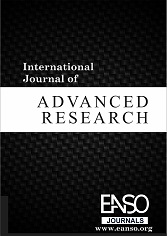Potential for Transition to Low-Carbon Urban Road Transport in Developing Countries: Insights from Literature
Abstract
It is projected that if no actions are taken to cut down the current rate of global warming, global temperatures will rise to irreversible levels between the years 2030 and 2050. Consequently, climate-induced risks to health, livelihoods, food and water supply/security, economic development, and human security will increase. However, although many efforts have been put in the developed nations to enhance sustainability in cities through the development of a Low-carbon transportation system, the situation is different in the developing nations. These countries are, for some reason, reluctant to adopt the concept of Low-carbon cities. For example, in Kenya, despite the evident climate threat associated with rising urban carbon emissions in the country, very little action to curb the emissions is observed both at individual and government levels. This is especially so in the transport sector. Therefore, it is critical that suitable low-carbon transition pathways are identified and adopted in the sector in order to cut down the emission levels. Although the transition to low-carbon transport is faced with a myriad of challenges, transitions bring about an enormousness of environmental and societal benefits through the development of environmentally sustainable systems. Policy instruments are governance tools that can be used to enhance the environmental sustainability of urban transport options. However, climate change targets cannot be realistically attained by a single policy instrument. Instead, research indicates the need for more integrative and strong policy packages that can stimulate low-carbon transitions. In view of this, there is a clear need for the envisioning of sustainable future cities and potential transition pathways towards the realisation of these futures, as it is considered advantageous to various disciplines. This study provides information that can be used to develop an integrated urban transportation system that is environmentally sustainable and which efficiently incorporates all modes of transport; based on the theory of transitional management
Downloads
References
Alonso, P. M., Hewitt, R., Pacheco, J. D., Bermejo, L. R., Jiménez, V. H., Guillén, J. V., Bressers, H., & de Boer, C. (2016). Losing the roadmap: Renewable energy paralysis in Spain and its implications for the EU low carbon economy. Renewable Energy, 89, 680–694. https://doi.org/10.1016/j.renene.2015.12.004
Aoki, K., Kishita, Y., Nakamura, H., & Masuda, T. (2020). The Use of Backcasting to Promote Urban Transformation to Sustainability: The Case of Toyama City, Japan. In O. Saito, S. M. Subramanian, S. Hashimoto, & K. Takeuchi (Eds.), Managing Socio-ecological Production Landscapes and Seascapes for Sustainable Communities in Asia: Mapping and Navigating Stakeholders, Policy and Action (pp. 45–66). Springer Singapore. https://doi.org/10.1007/978-981-15-1133-2_4
Ardila-Gomez, A., & Ortegon-Sanchez, A. (2016.). Sustainable Urban Transport Financing from the Sidewalk to the Subway. 111.
Axsen, J., Plötz, P., & Wolinetz, M. (2020). Crafting strong, integrated policy mixes for deep CO2 mitigation in road transport. Nature Climate Change, 10(9), 809–818. https://doi.org/10.1038/s41558-020-0877-y
Ayres, R. U. (1984). Technological forecasting for decision-making (2nd edn), Martino, Joseph, AmsterdarnINew York: North-Holland, 1983. Price: $29.00. Pages: 385. Journal of Forecasting, 3(4), 466–466. https://doi.org/10.1002/for.3980030415
Bachner, G., Mayer, J., Steininger, K. W., Anger-Kraavi, A., Smith, A., & Barker, T. S. (2020). Uncertainties in macroeconomic assessments of low-carbon transition pathways—The case of the European iron and steel industry. Ecological Economics, 172, 106631. https://doi.org/10.1016/j.ecolecon.2020.106631
Banister, D., & Hickman, R. (2013). Transport futures: Thinking the unthinkable. Transport Policy, 29, 283–293. https://doi.org/10.1016/j.tranpol.2012.07.005
Bhardwaj, C., Axsen, J., Kern, F., & McCollum, D. (2020). Why have multiple climate policies for light-duty vehicles? Policy mix rationales, interactions and research gaps. Transportation Research Part A: Policy and Practice, 135, 309–326. https://doi.org/10.1016/j.tra.2020.03.011
Camilleri, R., Attard, M., & Hickman, R. (2021). Future Low-Carbon Transport Scenarios: Practice Theory-Based Visioning for Backcasting Studies. Sustainability, 14, 74. https://doi.org/10.3390/su14010074
Cheshmehzangi, A., Xie, L., & Tan-Mullins, M. (2018). The role of international actors in low-carbon transitions of Shenzhen’s International Low Carbon City in China. Cities, 74, 64–74. https://doi.org/10.1016/j.cities.2017.11.004
Dreborg, K. H. (1996). Essence of backcasting. Futures, 9(28), 813–828.
Dugan, A., Mayer, J., Thaller, A., Bachner, G., & Steininger, K. W. (2022). Developing policy packages for low-carbon passenger transport: A mixed methods analysis of trade-offs and synergies. Ecological Economics, 193, 107304. https://doi.org/10.1016/j.ecolecon.2021.107304
Frantzeskaki, N., Hölscher, K., Bach, M., & Avelino, F. (2018). Co-creating Sustainable Urban Futures: A Primer on Applying Transition Management in Cities. Springer.
Froehlich, J., Findlater, L., & Landay, J. (2010). The design of eco-feedback technology. Proceedings of the SIGCHI Conference on Human Factors in Computing Systems, 1999–2008. https://doi.org/10.1145/1753326.1753629
Givoni, M., Macmillan, J., Gudmundsson, H., Sørensen, C. H., Fearnley, N., Ramjerdi, F., Åkerman, J., Kessler, F., Vencl, V., Justen, A., & Schippl, J. (2010). Inventory of measures, typology of non-intentional effects and a framework for policy packaging.
Government of Kenya (GoK). (2019). Transport Sector Climate Change Annual Report: Performance and Implementation of Climate Change Actions. Ministry of Transport, Infrastructure, Housing, Urban Development and Public Works. https://www.kcaa.or.ke/sites/default/files/publication/Transport_Sector_Climate_Change_Annual_Report.pdf
GOV.UK. (2003). Our energy future—Creating a low carbon economy. GOV.UK. https://assets.publishing.service.gov.uk/government/uploads/system/uploads/attachment_data/file/272061/5761.pdf
Hickman, R., & Banister, D. (2014). Transport, Climate Change and the City. Routledge. https://doi.org/10.4324/9780203074435
Hodson, M., Geels, F. W., & McMeekin, A. (2017). Reconfiguring Urban Sustainability Transitions, Analysing Multiplicity. Sustainability, 9(2), Article 2. https://doi.org/10.3390/su9020299
Hood, C. (2002). The tools of government: A guide to the new governance. Oxford University Press.
Huovila, A., Siikavirta, H., Antuña Rozado, C., Rökman, J., Tuominen, P., Paiho, S., Hedman, Å., & Ylén, P. (2022). Carbon-neutral cities: Critical review of theory and practice. Journal of Cleaner Production, 341, 130912. https://doi.org/10.1016/j.jclepro.2022.130912
Julio A. Soria-Lara & David Banister. (2018). Collaborative backcasting for transport policy scenario building. http://archive.org/details/mccl_10.1016_j.futures.2017.09.003
Kahn, H., & Wiener, A. J. (1967). The year 2000: A framework for speculation on the next thirty-three years. Macmillan.
Kemp, R., & Loorbach, D. (2006). Transition Management: A Reflexive Governance Approach. In Reflexive Governance for Sustainable Development. Edward Elgar Publishing. https://www.elgaronline.com/view/9781845425821.00015.xml
Kishita, Y., Hara, K., Uwasu, M., & Umeda, Y. (2016). Research needs and challenges faced in supporting scenario design in sustainability science: A literature review. Sustainability Science, 11(2), 331–347. https://doi.org/10.1007/s11625-015-0340-6
Loorbach, D., Brugge, R., & Taanman, M. (2008). Governance in the energy transition: Practice of transition management in the Netherlands. International Journal of Environmental Technology and Management, 9. https://doi.org/10.1504/IJETM.2008.019039
Mao, Q., Ma, B., Wang, H., & Bian, Q. (2019). Investigating Policy Instrument Adoption in Low-Carbon City Development: A Case Study from China. Energies, 12(18), Article 18. https://doi.org/10.3390/en12183475
Markard, J., Raven, R., & Truffer, B. (2012). Sustainability transitions: An emerging field of research and its prospects. Research Policy, 41(6), 955–967. https://doi.org/10.1016/j.respol.2012.02.013
Masson-Delmotte, V., Zhai, P., Portner, H. O., Roberts, D., Skea, J., Shukla, P. R., Pirani, A., Moufouma-Okia, W., Péan, C., Pidcock, R., Connors, S., Matthews, J. B. R., Chen, Y., Zhou, X., Gomis, M. I., Lonnoy, E., Maycock, T., Tignor, M., & Waterfield, T. (2018). Summary for Policymakers. In: Global Warming of 1.5°C. An IPCC Special Report on the impacts of global warming of 1.5°C above pre-industrial levels and related global greenhouse gas emission pathways, in the context of strengthening the global response to the threat of climate change, sustainable development, and efforts to eradicate poverty. https://www.ipcc.ch/site/assets/uploads/sites/2/2019/05/SR15_SPM_version_report_LR.pdf
May, A. D., Kelly, C., & Shepherd, S. (2006). The principles of integration in urban transport strategies. Transport Policy, 13(4), 319–327.
McLellan, B. C., Kishita, Y., & Aoki, K. (2017). Participatory Design as a Tool for Effective Sustainable Energy Transitions. In M. Matsumoto, K. Masui, S. Fukushige, & S. Kondoh (Eds.), Sustainability Through Innovation in Product Life Cycle Design (pp. 583–599). Springer Singapore. https://doi.org/10.1007/978-981-10-0471-1_40
McPhearson, T., Pickett, S. T. A., Grimm, N. B., Niemelä, J., Alberti, M., Elmqvist, T., Weber, C., Haase, D., Breuste, J., & Qureshi, S. (2016). Advancing Urban Ecology toward a Science of Cities. BioScience, 66(3), 198–212. https://doi.org/10.1093/biosci/biw002
Ministry of Transport, Infrastructure, Housing and Urban Development (MTIHUD). (2020). INTEGRATED NATIONAL TRANSPORT POLICY. Republic of Kenya.
Moriarty, P., & Wang, S. J. (2014). Low-carbon Cities: Lifestyle Changes are Necessary. Energy Procedia, 61, 2289–2292. https://doi.org/10.1016/j.egypro.2014.12.439
Quist, J., & Vergragt, P. (2006). Past and future of backcasting: The shift to stakeholder participation and a proposal for a methodological framework. Futures, 38, 1027–1045. https://doi.org/10.1016/j.futures.2006.02.010
Rogge, K. S., Kern, F., & Howlett, M. (2017). Conceptual and empirical advances in analysing policy mixes for energy transitions. Energy Research & Social Science, 33, 1–10. https://doi.org/10.1016/j.erss.2017.09.025
Rotmans, J. (1994). Transitions on the move. Global dynamics and sustainable development. Bilthoven, The Netherlands: Rijksinstituut Voor Volksgezondheid En Milieu (RIVM).
Ruiqing, L. X. H. F. L. (2010). The Present Situation and Development Trend of Low-carbon City Theory and Practice [J]. The Journal of Gansu Administration Institute, 3.
Sakamoto, K., & Belka, S. (2010). Financing Sustainable Urban Transport. GTZ. http://transferproject.org/wp-content/uploads/2017/09/Financing-Sustainable-Urban-Transport.pdf
Simoes, S., Nijs, W., Ruiz, P., Sgobbi, A., & Thiel, C. (2017). Comparing policy routes for low-carbon power technology deployment in EU – an energy system analysis. Energy Policy, 101, 353–365. https://doi.org/10.1016/j.enpol.2016.10.006
Soria-Lara, J. A., & Banister, D. (2017). Participatory visioning in transport backcasting studies: Methodological lessons from Andalusia (Spain). Journal of Transport Geography, 58(C), 113–126.
Steg, L. (2008). Promoting household energy conservation. Energy Policy, 36(12), 4449–4453. https://doi.org/10.1016/j.enpol.2008.09.027
Tuominen, A., Tapio, P., Varho, V., Järvi, T., & Banister, D. (2014). Pluralistic backcasting: Integrating multiple visions with policy packages for transport climate policy. Futures, 60, 41–58. https://doi.org/10.1016/j.futures.2014.04.014
Van der Heijden, K. (1996). Scenarios: The art of strategic conversation. John Wiley & Sons. http://catdir.loc.gov/catdir/toc/onix03/96032465.html
Wee, B., & Geurs, K. (2004). Backcasting as a tool for sustainable transport policy making: The Environmental Sustainable Transport study in the Netherlands. European Journal of Transport and Infrastructure Research 4(1) Pp. 47-69, 4.
Whiteman, G., de Vos, D. R., Chapin III, F. S., Yli-Pelkonen, V., Niemelä, J., & Forbes, B. C. (2011). Business strategies and the transition to low-carbon cities. Business Strategy and the Environment, 20(4), 251–265. https://doi.org/10.1002/bse.691
Yang, L., & Li, Y. (2013). Low-carbon City in China. Sustainable Cities and Society, 9, 62–66. https://doi.org/10.1016/j.scs.2013.03.001
Zhang, R., Fujimori, S., Dai, H., & Hanaoka, T. (2018). Contribution of the transport sector to climate change mitigation: Insights from a global passenger transport model coupled with a computable general equilibrium model. Applied Energy, 211(C), 76–88.
Copyright (c) 2023 Dorcas Wambui Kariuki, John Muna Kuria

This work is licensed under a Creative Commons Attribution 4.0 International License.




























